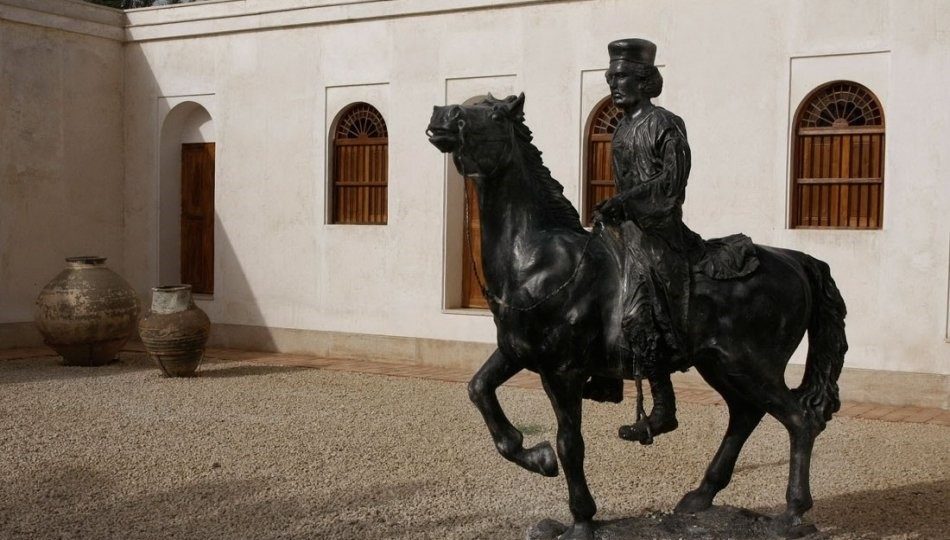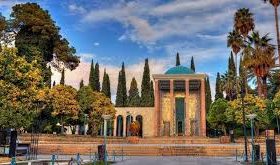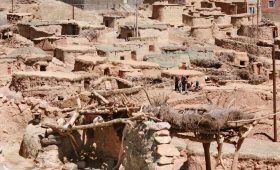Rais Ali Delvari’s house is one of the famous places in Bushehr in Tangistan. The history of this house dates back to the Qajar period. The house is famous because it belonged to Rais Ali, the general of Tangistan. Rais Ali Delvari ‘s house has become a museum that is visited by tourists and those interested in contemporary history. The architecture of the walls of Rais Ali Delvari’s house is white. The whiteness of the house shines like a jewel in the heart and attracts the eyes of tourists.
Rais Ali Delvari ‘s house is located in the southeast of Delwar in Tangistan city and Bushehr province. The history of Rais Ali Delvari’s house dates back to the Qajar era. This historic house was given to the cultural heritage organization of Bushehr by Rais Ali’s children and is currently used as an anthropology museum. Rais Ali Delvari ‘s house was built 110 years ago and its area is 3,750 square meters. The interior of the museum contains some objects and images that depict the historical period of the anti-colonial struggles of the southern people against British colonialism in the contemporary history of Iran.
Rais Ali Delvari ‘s house displays the history of the struggle against colonialism in the south of Iran. During the Tangistan war against British colonialism, Rais Ali Delwari’s house was the meeting place for leaders to make decisions. The first room of Rais Ali Delvari’s house, where the statue of Rais Ali and important and influential personalities of that time are placed, was the meeting place. Rais Ali Delwari’s will and oath as well as a collection of historical stamps are displayed in this place. The decoration of this house is very simple and ends with normal plastering.
Rais Ali Delvari house has different parts. The entrance of Rais Ali Delvari ‘s house has a roofed and pillared space. The entrance to the house has a beautiful wooden door with two hinges. After passing through the entrance, you will see two symmetrical spaces that are located on both sides of the house, and in the middle of these two spaces, there is a corridor whose floor is lower than the other two spaces and is almost the same as the floor of the yard. The house of Rais Ali Delvari is considered as a symbol of preserving the independence of the country against colonialism in Tangistan.
The house of Rais Ali Delvari displays a museum of the brave struggles of Tangistan.
The walls of Rais Ali Delvari ‘s house are white and the doors and windows of the building are wooden and brown. Wooden doors and windows have a spectacular harmony when placed next to white walls. The entrance door of the house has two columns. The corridor at the beginning of the entrance of the house leads the visitors of the museum to the hall.
The two columns in front of the house door are known as “Shahneshin” and the entrance gate of Rais Ali Delvari ‘s house is known as “Heshti”. There are two lions and a bouquet of flowers on top of the building’s pediment, and an inscription with the theme of a poem is carved in this part, which reads as follows:
There is also a vase in Rais Ali Delvari ‘s house with the inscription “Ya Miftah al-Bab” under it. On the door of Rais Ali Delvari’s house there are traces of bullets and the decorations of the house include simple plastering. The stucco paintings include the image of palm trees, flower gardens and tulip lamps, which are designed on the pillars of the building.
Rais Ali Delvari Museum is considered Delwar Anthropology Museum. This museum, which is the house of Rais Ali Delvari, has different sections. The Document Museum has 23 rooms, seven of which are dedicated to documents, and contains many war weapons from the brave resistance period of Tangstan
In this museum, about 95 weapons from the period of the southern peoples’ war with British colonialism have been left. The 17 rooms of the museum are used for preservation of documents and historical objects. Other rooms of the museum are for introducing documents, pictures, maps of war, Tungsten riflemen, calendar related to campaigns, rooms and weapons used in campaigns.
The document room of Rais Ali Delvari Museum contains the documents and letters that remained from that era. The other rooms of the museum, the replica room (in this room, replicas of how the British forces invaded Delvar are displayed, which show facts from the Tangstan resistance period), the other rooms include the film room, Rais Ali Delvari’ s personal war equipment, his affidavits. Which is engraved on a stone tablet and displayed for tourists to visit. In this museum, the statue of Rais Ali Delvari, cannon balls and a collection of old stamps are kept.
Delvar beaches are the border of this city with the Persian Gulf. Delvar Beach Park is one of the attractions where you can relax and go for a walk. The old palm trees that were next to the sea and the hot sands next to the beautiful nature are among the important features of these beaches. If you go to Delvar, don’t miss watching the sunset or sunrise on these dreamy beaches.
Langeha cemetery is one of the beauties of Delvar. This cemetery is located in the Delvar wharf, and there are many worn-out barges stranded there. Visiting this cemetery is very attractive and introduces tourists to the history and culture of Delavar.
Rais Ali Delvari was one of the constitutionalists of southern Iran. He was born in 1261 solar year in Delvar, which was one of the villages of Tangistan and the center of its coastal part. Rais Ali is the son of a person named Zair Muhammad, who was the head of the port of Delwar and later became known as Moinul Islam. His mother was a woman from Tangistan. Raees Ali Delwari joined the ranks of constitutional fighters at the age of 25, his family was from the Lor clan, and despite his young age, Raees Ali became one of the pioneers of constitutionalism in Iran. During the uprising against Muhammad Ali Shah, Rais Ali Delvari also revolted against Muhammad Ali Shah along with other constitutionalists.
Rais Ali Delwari was one of the leaders of the Tangistan uprising that lasted for seven years.
After the First World War, despite Iran’s declaration of neutrality, the British entered the country and occupied the south of Iran. Rais Ali’s youth was at the same time as the presence of the British in the Persian Gulf. He had an effective role in the uprising of the people of the south; this uprising lasted for seven years. During this time, Rais Ali with the help of his assistants pursued two goals; one was to guard Bushehr, Tangestan and Dashtestan and the other was to prevent the movement of foreigners into Iran’s borders and defend the country’s independence.
Mullah Mohammad Kazem Akhund Khorasani, in the way of defending the country against England, issued a fatwa of Jihad against the infidels from Najaf Ashraf. With the help of his soldiers, Rais Ali implemented the fatwa of Khorasani Mukhtar and started Jihad. He fought the aggressors bravely and inflicted heavy defeat on them. The British, who did not have the ability to fight against the brave men of Tungstan, offered Rais Ali a bribe of 40,000 thousand pounds; But Rais Ali rejected it. The British attacked Delwar port with four ships; But after a three-day battle, they were defeated by the Tangestanis. The defeat was to the point where some British officers were killed.
Rais Ali took Bushehr out of the hands of the British and occupied the city for about 9 months. Raees Ali Delvari was shot in the back of the head by an infiltrator named Gholamhossein Tengki when he was fighting the British army in a place called “Tangk Safar” and he was martyred at the age of 33. Rais Ali Delvari ‘s body was buried next to an Imamzadeh in one of the villages of Tangistan. But later, his family took his body to Najaf and buried him in the Wadi al-Islam cemetery near the shrine of Hazrat Ali (a.s.).
An affidavit of Raees Ali Delvari has been left behind, which is also called the will of Raees Ali Delvari. In this will, he has sworn to defend the homeland. Rais Ali was of the opinion that if he does not do this, God and His Messenger will not be pleased with him. The text of his oath has been engraved on a board in different places in Bushehr, and it is known as the Charter of Rais Ali Delvari ‘s uprising and his will.




